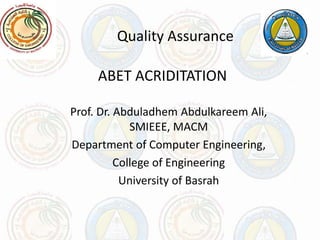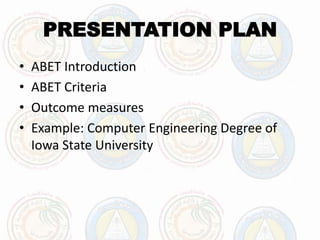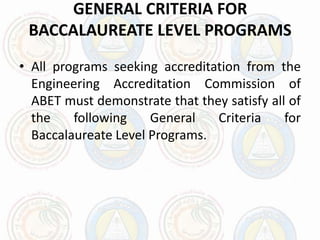The document outlines the ABET accreditation criteria for baccalaureate level engineering programs, detailing essential definitions, program educational objectives, student outcomes, assessment processes, continuous improvement, curriculum requirements, and faculty qualifications. It emphasizes the need for systematic evaluation and documentation to ensure program effectiveness and adherence to institutional missions. Furthermore, it highlights the importance of adequate resources and facilities to support the learning environment and faculty development.


































